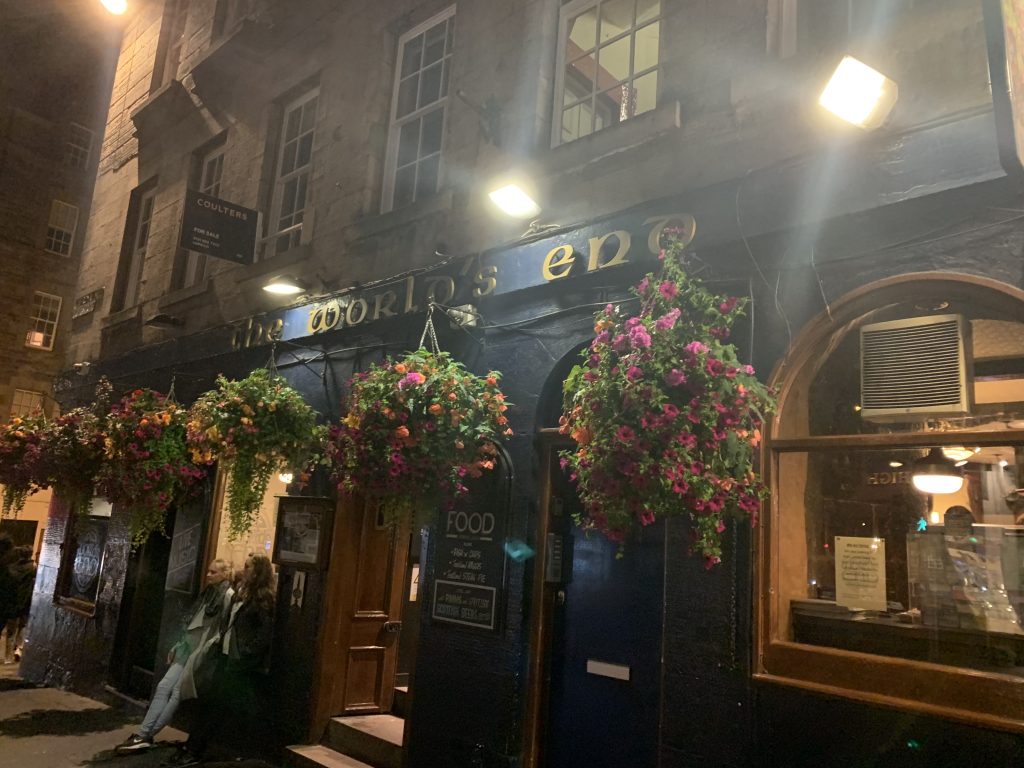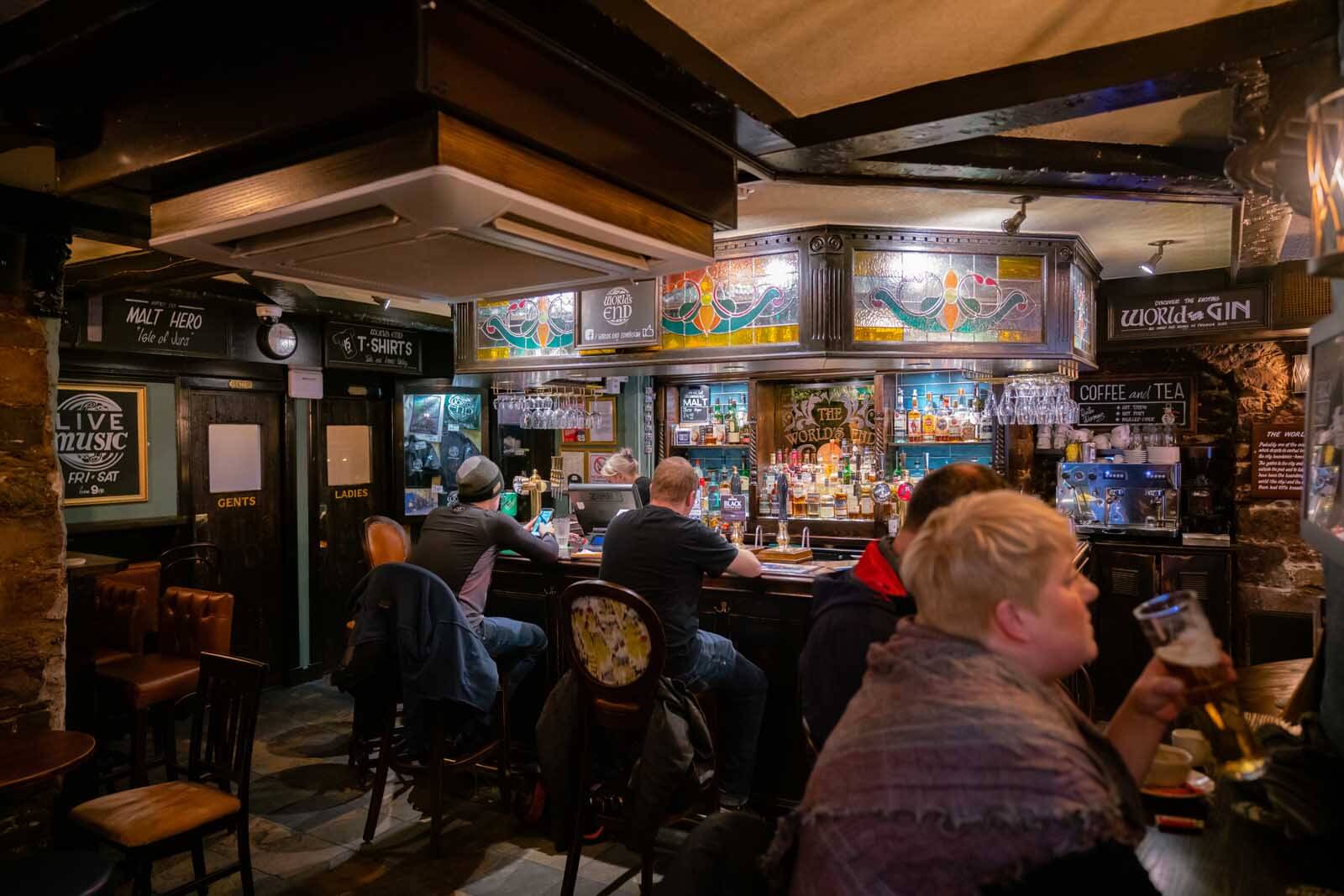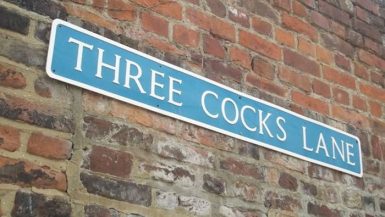The World’s End: Edinburgh’s Gateway to the Past
The Royal Mile in Edinburgh is a living tapestry of history. Its cobblestones echo with centuries of footsteps—merchants, poets, soldiers, and dreamers—all weaving their stories into the fabric of Scotland’s capital. As you descend toward the lower end of this storied street, past St Giles’ Cathedral and the Scottish Storytelling Centre, you’ll find a pub whose name alone invites curiosity: The World’s End.
This isn’t just a pub. It’s a portal to the past, a place where the medieval city once ended and the unknown began. Visiting The World’s End is more than a stop for a pint—it’s an experience steeped in history, culture, and the enduring spirit of Edinburgh.

The Approach: Walking the Royal Mile
Start your journey at Edinburgh Castle, perched like a sentinel above the city. From here, the Royal Mile stretches downward in a gentle slope, lined with towering tenements, closes, and wynds that seem to whisper secrets from another age. The air carries a faint chill, even in summer, and the scent of roasted coffee mingles with the distant strains of bagpipes played by street performers.
As you walk, notice the rhythm of the street: tourists snapping photos, locals weaving through the crowd, and the occasional storyteller spinning tales of kings and rebels. Every stone feels alive with memory. By the time you reach the lower end of the Mile, anticipation builds. You’re nearing the spot where Edinburgh’s world once ended.
First Glimpse of The World’s End
The pub’s sign swings gently above the entrance, its bold lettering framed by weathered stone. The façade is unassuming yet inviting, with windows that glow warmly against the gray of the Old Town. Push open the door, and you’re greeted by a rush of warmth and the comforting aroma of ale and hearty Scottish fare.
Inside, time seems to slow. Dark wood panels line the walls, brass fixtures gleam softly in the dim light, and the ceiling feels low enough to make you duck—a reminder of the building’s medieval origins. Foreign banknotes pinned above the bar tell stories of travelers from every corner of the globe, all drawn to this place at the edge of history.

Why “The World’s End”? A Name Born of Necessity
As you settle into a snug corner with a pint, the question arises: why such a dramatic name? The answer lies in the 16th century, when Edinburgh was a walled city. After Scotland’s crushing defeat at the Battle of Flodden in 1513, the city built the Flodden Wall to protect itself from English invasion. The main gateway through that wall—the Netherbow Port—stood right here.
For the city’s poor, the toll to pass through the gate was impossible to pay. Beyond the wall lay an unknown world they would never see. To them, this spot was the edge of existence—the world’s end. Today, brass markers on the Royal Mile trace where the gate once stood, and if you look closely, you’ll see remnants of the original wall built into the pub itself. Touch the stone, and you’re touching history.
The Flodden Wall and Netherbow Port: Guardians of a Lost World
Imagine Edinburgh in the 1500s: a cramped, bustling burgh of 50,000 souls squeezed into towering tenements along a half-mile stretch of road. The Flodden Wall encircled this world, its gates locked at night with a warning bell that tolled through the darkness. The Netherbow Port was the most formidable of these gates—a massive structure with stout towers and a heavy wooden door that could be barred against invaders.
Though the port was dismantled in the 1760s, its memory lingers. The bell survives in the Scottish Storytelling Centre nearby, and the brass cobbles outside The World’s End mark its footprint. Standing here, you can almost hear the clang of iron and the murmur of voices as guards closed the gate for the night.

From Boundary to Bar: The Building’s Evolution
The structure that houses The World’s End is itself a historical artifact. Over the centuries, it has worn many hats—a bakery, a wine merchant—before settling into its current role as one of Edinburgh’s most beloved pubs. Its walls incorporate parts of the original Flodden Wall, making it a tangible link to the city’s medieval past.
Today, the pub retains its old-world charm with dark wood interiors, brass accents, and a cozy layout that encourages conversation. It’s the kind of place where you can lose track of time, lulled by the hum of voices and the clink of glasses.
Savoring the Experience: Food and Drink
The World’s End isn’t just about history—it’s about flavor. The menu reads like a love letter to Scottish cuisine:
- Cullen Skink: A creamy smoked haddock soup that warms you from the inside out.
- Steak & Ale Pie: Rich, hearty, and perfect for a chilly Edinburgh evening.
- Fish & Chips: Golden, crisp, and served with a generous helping of tartar sauce.
- Haggis Fritters: For the adventurous, a spicy twist on Scotland’s most famous dish.
Pair your meal with a pint of World’s End Ale or a dram of single malt whisky, and you’ll feel the centuries melt away. Owned by Belhaven Brewery, Scotland’s oldest working brewery, the pub is a proud ambassador of local brewing traditions.
The Atmosphere: A Living Time Capsule
Unlike many modern bars, The World’s End has resisted the lure of flashing screens and blaring music. Here, conversation reigns supreme. The lighting is soft, the décor steeped in tradition, and the vibe is warm and welcoming. It’s the kind of place where strangers become friends over a shared love of history and good ale.

Echoes of the Past: The World’s End Murders
The pub’s story isn’t all lighthearted. In 1977, The World’s End became infamous as the last place two teenage girls were seen before their brutal murders—a case that haunted Scotland for decades. This dark chapter adds a layer of poignancy to the pub’s history, reminding visitors that the past carries both joy and sorrow.

Cultural Significance: More Than a Pub
The World’s End is a cultural landmark. Its location on the Royal Mile places it at the heart of Edinburgh’s historic district, making it a magnet for tourists and locals alike. During the Edinburgh Festival, the pub buzzes with energy, hosting live music nights that showcase traditional Scottish sounds. Its enduring popularity has earned it accolades, including a Travelers’ Choice Award from Tripadvisor.
Practical Tips for Your Visit
- Address: 2–8 High Street, Edinburgh EH1 1TB
- Opening Hours: Daily from 11:30 AM; open until midnight on weekends
- Features: Free Wi-Fi, dog-friendly, family-friendly
- Pro Tip: Arrive early—space is limited, and the pub is popular with locals and visitors alike.
Why It Matters
The World’s End is more than a pub—it’s a story in stone and timber, a reminder that cities are living histories. It connects visitors to Edinburgh’s roots, offering a taste of continuity in a fast-changing world. Raise a glass here, and you’re not just drinking ale—you’re toasting centuries of resilience, adaptation, and identity.



